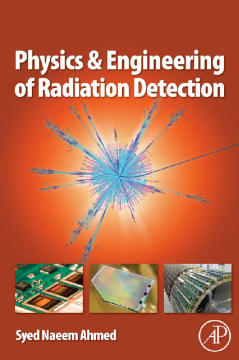
Additional Information
Book Details
Abstract
Physics and Engineering of Radiation Detection presents an overview of the physics of radiation detection and its applications. It covers the origins and properties of different kinds of ionizing radiation, their detection and measurement, and the procedures used to protect people and the environment from their potentially harmful effects. It details the experimental techniques and instrumentation used in different detection systems in a very practical way without sacrificing the physics content. It provides useful formulae and explains methodologies to solve problems related to radiation measurements. With abundance of worked-out examples and end-of-chapter problems, this book enables the reader to understand the underlying physical principles and their applications. Detailed discussions on different detection media, such as gases, liquids, liquefied gases, semiconductors, and scintillators make this book an excellent source of information for students as well as professionals working in related fields. Chapters on statistics, data analysis techniques, software for data analysis, and data acquisition systems provide the reader with necessary skills to design and build practical systems and perform data analysis.
- Covers the modern techniques involved in detection and measurement of radiation and the underlying physical principles
- Illustrates theoretical and practical details with an abundance of practical, worked-out examples
- Provides practice problems at the end of each chapter
"Ahmed's book offers the most thorough treatment of the field that this reviewer has encountered so far... Worked examples are interspersed liberally throughout and, together with the chapter problems, make this a good teaching resource. Clearly written and starting at a level accessible also to undergraduates, this book is for all reader levels in physics and engineering." SUMMING UP: Recommended. Lower-division undergraduates through professionals; two-year technical program students. -- U. Greife, Colorado School of Mines, CHOICE, October 2007
